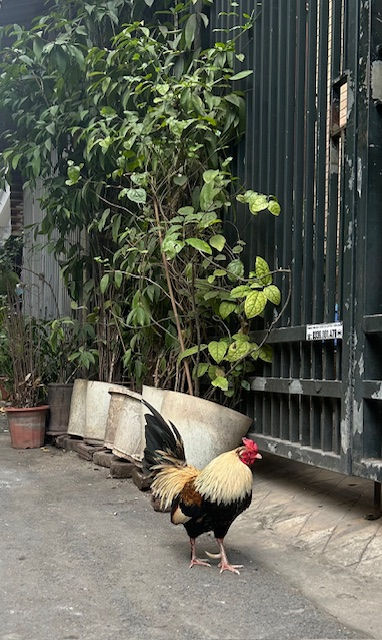LOTUS
- ameister7
- Oct 8, 2024
- 3 min read
Updated: Aug 13
A remarkable plant
October 2024

It’s early September and the lotus season has almost come to an end. The fields near Westlake are still a popular spot for selfies and the flower ladies in the city have packed their bikes with white and pink lotuses to serve as background for “chụp ảnh đẹp” – taking beautiful photos.
Lotus is Vietnam’s national flower and apart from the natural beauties in the ponds the image appear painted or printed somehow everywhere: On the Vietnamese national dress “áo dài “ and the conical hat “nón lá”, on homeware, mural paintings, embroidered artwork and part of my street is lit by lotus-shaped lanterns. In addition to its visual symbolism, the lotus plays a vital role in Vietnamese cuisine, with its flowers, seeds, roots, and leaves used in a variety of dishes. Moreover, these parts are also widely utilized in traditional medicine. What an amazing plant!
No mud, not lotus

The plant's cycle begins in winter, under water, with its roots resting in the mud. It is said that the muddier the pond, the more beautiful the flower. As soon as it gets warmer, seedlings develop leaves that rise to the water's surface, eventually growing far above it. The long stems can reach up to three meters, standing upright with firm, fresh buds. The flowers open gradually each day, close again in the evening and fade after only a few days. Once the petals fall, they reveal seed pods where the seeds ripen. When the pods turn green, they are harvested. The pods are opened by hand or with a knife to extract the lotus seeds. Once peeled, they can be eaten fresh or dried for storage.
One commune, one product
In my first summer in Hanoi, I had only noticed the flowers in the ponds. I’m not sure why the typical lotus dishes, such as green sticky rice with lotus seeds, lotus root soup and salad, or pork wrapped in lotus leaves, never caught my eye when I studied a menu. It was only later, while traveling in the Mekong Delta, that I saw large lotus cultivation areas and realized what the plant has to offer beyond its flowers. There as well as in many other provinces lotus is part of the “One Commune, One Product” (OCOP) program. This initiative focuses on developing local specialty products to increase rural incomes, create jobs, promote human resources, and preserve cultural diversity. Many lotus farmers successfully market lotus flower tea, lotus pulp tea, lotus leaf tea, fresh lotus seeds, and dried lotus under the OCOP label. This is how I found out about it. I bought my first small bag of lotus seeds at an OCOP shop. I invited Cô Lien over for tea and offered her the seeds as a snack. We both love the little crunchy and delicious treats. Cô Lien mentioned that they are nutrient-rich, providing protein, fiber, essential vitamins and minerals, aiding digestion, improving sleep, and promoting heart health. I haven’t checked this, but I’m happy to believe it.
Silk
One more amazing thing I learned about the lotus: it can also be used to produce lotus silk, crafted from the fine fibers of lotus stems in many tedious steps. While Vietnam isn’t the only country in Southeast Asia where this unique fabric is made - the technique likely originated in Myanmar -Thailand and Cambodia also have a tradition of it.
Near Hanoi, a woman from a traditional silk village began working with lotus silk in around 2017. She is the first artisan in Vietnam to weave silk from lotus and has received great recognition for it. Lotus silk is soft and fluffy, yet elastic and quick-drying, offering a cool and comfortable feel. The village’s signature product is a lotus silk scarf embroidered with a beautiful pink lotus flower, which is said to have the potential to become a five-star OCOP product.
I haven’t had the chance to see it for myself yet, but the silk artisan is well-known, and several videos showcasing her work can be found on YouTube.





















